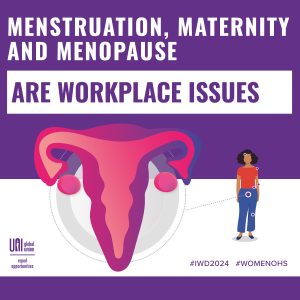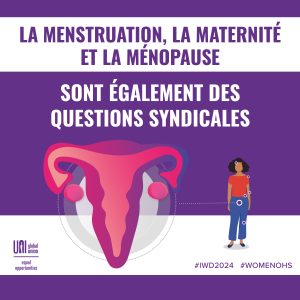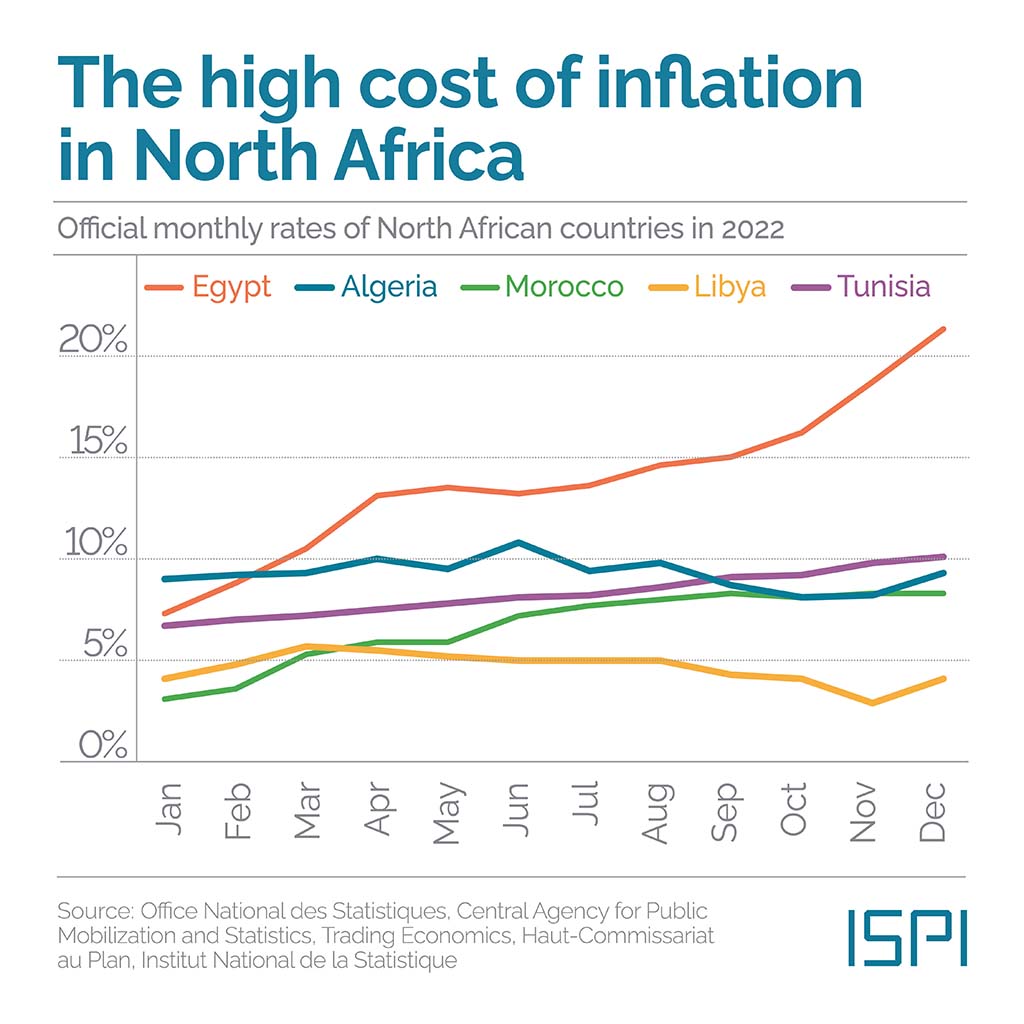
This International Women’s Day, UNI Global Union Equal Opportunities published the first guide in a series aimed at elevating menstruation, maternity and menopause as occupational health and safety issues.
The effort seeks to break down the stigmas surrounding “the three ‘M’s.” It also encourages unions to consider these three natural processes in developing workplace standards and in collective bargaining. The initiative kicks off with a focus on menstruation health at work.
Significance of Sustainable Development Goals (SDGs)
- Goal 5: Achieve gender equality and empower all women and girls
- Goal 8: Promote sustained, inclusive and sustainable economic growth, full and productive employment and decent work for all
- Goal 10: Reduce inequality within and among countries
“The three ‘M’s have a significant impact on the professional development of women. By centring on them, this campaign will further strengthen gender equality within trade unions and throughout the world of work,” said Veronica Fernandez Mendez, Head of Equal Opportunities. “We know how important it is to provide knowledge and tools for women workers to defend their rights and build better, stronger, diverse and more equal workplaces around the world.”
The guide, published on 8 March, breaks the silence that often shrouds menstrual health at work and underscores the urgency for policies that meet the needs of menstruating workers.
For many, the lack of access to appropriate menstrual health is not just a discomfort but a barrier to their participation in the workplace. The absence of private and clean bathroom facilities – and the lack of adequate break time to use them – pose significant health challenges, such as infection and kidney problems. Menstruating individuals require spaces where they can manage their hygiene needs discreetly and comfortably, without fear of embarrassment or exposure. This necessity extends to having facilities for the disposal of sanitary products and access to clean water for washing, which are basic but vital needs that are often overlooked in workplace settings.
Inflexible work time can exacerbate these challenges, particularly for those experiencing painful or debilitating menstrual symptoms or conditions such as menorrhagia or endometriosis. The traditional 9-to-5 work model does not always accommodate the need for rest or the sudden onset of menstrual pain, leading to increased absenteeism and reduced productivity. Implementing menstrual leave policies, providing options for remote working when possible, and allowing adjusted hours are key steps towards creating a more inclusive and supportive workplace environment.
The guide highlights how trade unions can spearhead measures to support menstruating workers, including negotiating policies for menstrual leave, ensuring access to sanitary products, enhancing workplace facilities for privacy and fighting the stigma associated with menstruation. Education and training programmes can foster a supportive workplace culture, accommodating the needs of menstruating workers and ensuring their rights are upheld.
Examples of Positive Change
- Activists from Bangladeshi union the National Shop Employees Federation advocated and won private bathroom facilities at a large supermarket.
- The “Stop the Stigma” campaign in Ireland provided evidence-backed solutions for proper menstrual and menopause workplace policies.
These examples illustrate positive change when trade unions, employers, and workers collaborate to address the challenges faced by menstruating workers.
“On International Women’s Day, we raise our voices to say: gender equality is central to all we do as a trade union movement,” said UNI General Secretary Christy Hoffman. “The issues affecting women workers do not belong in the shadows but at the heart of collective bargaining, and our three ‘M’s campaign is crucial for unions fighting to make work safe and to make gender equality a reality.”
Materials

Haga clic aquí para obtener material en español.
SDGs, Targets, and Indicators
1. Which SDGs are addressed or connected to the issues highlighted in the article?
- SDG 5: Gender Equality
- SDG 8: Decent Work and Economic Growth
- SDG 10: Reduced Inequalities
- SDG 3: Good Health and Well-being
The article addresses issues related to gender equality, decent work and economic growth, reduced inequalities, and good health and well-being.
2. What specific targets under those SDGs can be identified based on the article’s content?
- Target 5.1: End all forms of discrimination against all women and girls everywhere.
- Target 5.4: Recognize and value unpaid care and domestic work through the provision of public services, infrastructure, and social protection policies and the promotion of shared responsibility within the household and the family.
- Target 8.5: By 2030, achieve full and productive employment and decent work for all women and men, including for young people and persons with disabilities, and equal pay for work of equal value.
- Target 10.2: By 2030, empower and promote the social, economic, and political inclusion of all, irrespective of age, sex, disability, race, ethnicity, origin, religion or economic or other status.
- Target 3.8: Achieve universal health coverage, including financial risk protection, access to quality essential health-care services, and access to safe, effective, quality, and affordable essential medicines and vaccines for all.
The article’s content relates to these specific targets under the SDGs.
3. Are there any indicators mentioned or implied in the article that can be used to measure progress towards the identified targets?
- Indicator 5.1.1: Whether or not legal frameworks are in place to promote, enforce, and monitor equality and non-discrimination on the basis of sex.
- Indicator 5.4.1: Proportion of time spent on unpaid domestic and care work, by sex, age, and location.
- Indicator 8.5.1: Average hourly earnings of female and male employees, by occupation, age group, and persons with disabilities.
- Indicator 10.2.1: Proportion of people living below 50 percent of median income, by age, sex, and persons with disabilities.
- Indicator 3.8.1: Coverage of essential health services (defined as the average coverage of essential services based on tracer interventions that include reproductive, maternal, newborn, and child health, infectious diseases, non-communicable diseases, and service capacity and access).
These indicators can be used to measure progress towards the identified targets in relation to the issues discussed in the article.
Table: SDGs, Targets, and Indicators
| SDGs | Targets | Indicators |
|---|---|---|
| SDG 5: Gender Equality | Target 5.1: End all forms of discrimination against all women and girls everywhere. | Indicator 5.1.1: Whether or not legal frameworks are in place to promote, enforce, and monitor equality and non-discrimination on the basis of sex. |
| SDG 8: Decent Work and Economic Growth | Target 8.5: By 2030, achieve full and productive employment and decent work for all women and men, including for young people and persons with disabilities, and equal pay for work of equal value. | Indicator 8.5.1: Average hourly earnings of female and male employees, by occupation, age group, and persons with disabilities. |
| Target 5.4: Recognize and value unpaid care and domestic work through the provision of public services, infrastructure, and social protection policies and the promotion of shared responsibility within the household and the family. | Indicator 5.4.1: Proportion of time spent on unpaid domestic and care work, by sex, age, and location. | |
| SDG 10: Reduced Inequalities | Target 10.2: By 2030, empower and promote the social, economic, and political inclusion of all, irrespective of age, sex, disability, race, ethnicity, origin, religion or economic or other status. | Indicator 10.2.1: Proportion of people living below 50 percent of median income, by age, sex, and persons with disabilities. |
| SDG 3: Good Health and Well-being | Target 3.8: Achieve universal health coverage, including financial risk protection, access to quality essential health-care services, and access to safe, effective, quality, and affordable essential medicines and vaccines for all. | Indicator 3.8.1: Coverage of essential health services (defined as the average coverage of essential services based on tracer interventions that include reproductive, maternal, newborn, and child health, infectious diseases, non-communicable diseases, and service capacity and access). |
Behold! This splendid article springs forth from the wellspring of knowledge, shaped by a wondrous proprietary AI technology that delved into a vast ocean of data, illuminating the path towards the Sustainable Development Goals. Remember that all rights are reserved by SDG Investors LLC, empowering us to champion progress together.
Source: uniglobalunion.org

Join us, as fellow seekers of change, on a transformative journey at https://sdgtalks.ai/welcome, where you can become a member and actively contribute to shaping a brighter future.







